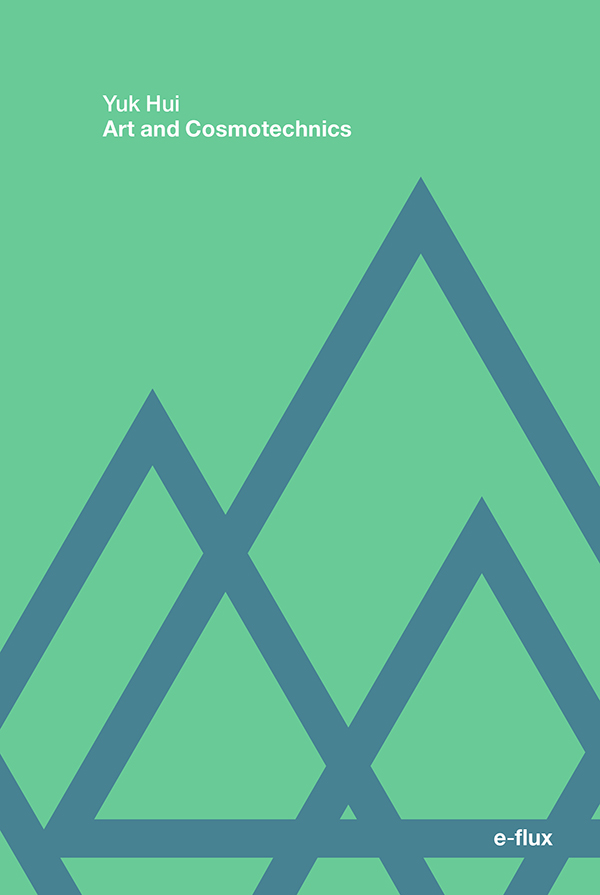
Art and Cosmotechnics (2021) Yuk Hui
In this text Hui explores new philosophical approaches to technology. Leaning heavily on Heidegger’s work, Hui proposes a non-instrumental view of technology that contrasts with a dominant Western standpoint. He argues for a broader non-Western understanding of technology that acknowledges the affinity between forms of technical activity and their cultural location. Hui frames his analysis by considering the creative and poetic role that art can play in shaping a new organic mode of thinking or what he calls cosmotechnics that moves beyond an extractive and instrumental approach to technology.
Cosmotechnics is an ongoing concept of Hui’s that looks beyond an exclusive Western philosophical position regarding technology. (See his previous texts The Question Concerning Technology in China (2016) and Recursivity and Contingency (2019)). The concept represents Hui’s attempt to develop a more ethical relation between human life, art, and nature. Key to this is developing a more non-utilitarian approach to technology that is central to the arts. According to Hui this would ensure the “unification of moral order and cosmic order through technical activities.” Such technical activity is understood to be fundamentally poetic and noninstrumental.
A feature of the book is Hui continuing reflection on the distinction between technical activity conceived in Europe that extends back to the ancient Greece and that considered in China that is identified through the Daoist notion of xuan. The first two chapters explore these differences with a rich account of the Western tradition culminating in Heidegger’s work on technology and aesthetics followed by an analysis of the Daoist logic inherent shanshui and its Confucian logic of qi. Such forms of Eastern thought offer an alternative view of nature that diverges from extractive/enframing models of technical activity problematised by Heidegger.
The rest of the book foregrounds the non-instrumental view of technics found in xuan and also presented in his notion of recursivity which he applies to digital technology. Recursivity encourages a more organic and diverse approach to technology that can resist dominant market forces and extractive modes of being. The final chapter turn to the work of Jean- François Lyotard and his writings on the ‘inhuman’ and his work on aesthetics.
Although it attempts to foreground artistic practice and aesthetics throughout, Hui’s choice of artists is more than a little dated focusing on such Modernist figures as Paul Klee and Cézanne. There is no real attempt to look at more contemporary artistic practices that deal with issues of technology, digital media, AI etc.
Nontheless Hui provides a rich account of philosophical aesthetics that considers both the Western and Chinese traditions while at the same time promoting a form of organic thinking that cultivates new forms of technodiversity. In this regard he provides a rich philosophical account of art, aesthetics and technology that can inform reflections on AoC.
Mick O’Hara
TU Dublin
Hui, Yuk. Art and Cosmotechnics. Minneapolis: University of Minnesota Press, 2021.
